The train wrecker (Neolentinus lepideus) is an edible mushroom with a confusing history. It's currently placed in the Polyporaceae family, which is odd as the mushroom has gills-not pores.
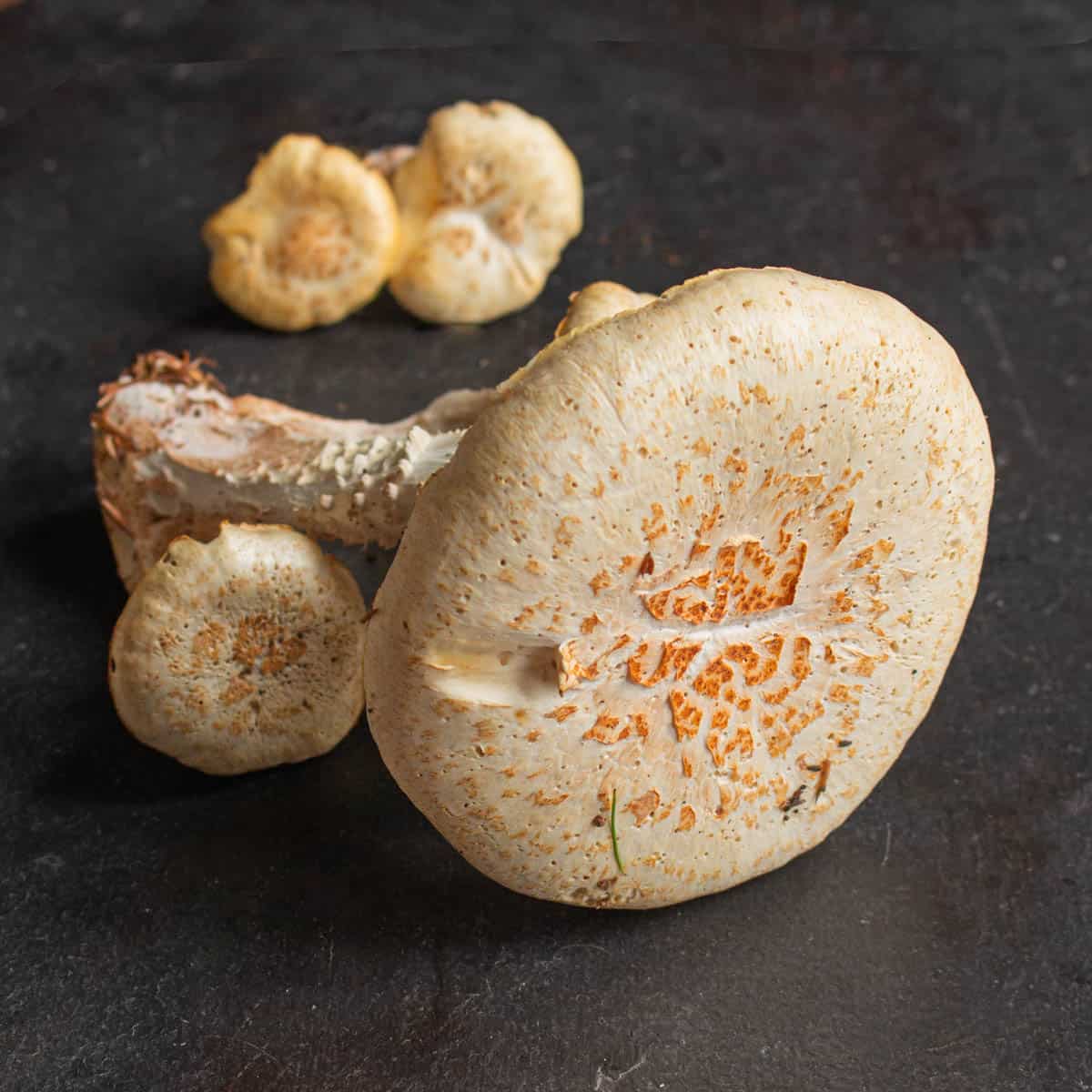
Train wrecker mushrooms.
History
The train wrecker name comes from the mushrooms' resistance to creosote and ability to colonize treated lumber-most notably railroad ties.
Described in 1815 by a Swedish mycologist Elias Magnus Fries, it was originally named Agaricus lepideus. What's most interesting is the mushroom has a combination of unique characteristics that've baffled mycologists.
For example, they have more synonyms than any mushroom I know, including Ramaria ceratoides, Panus lepideus, Clitocybe lepidea, and others. To date, I've seen 10 Latin names placing it in four different genuses!
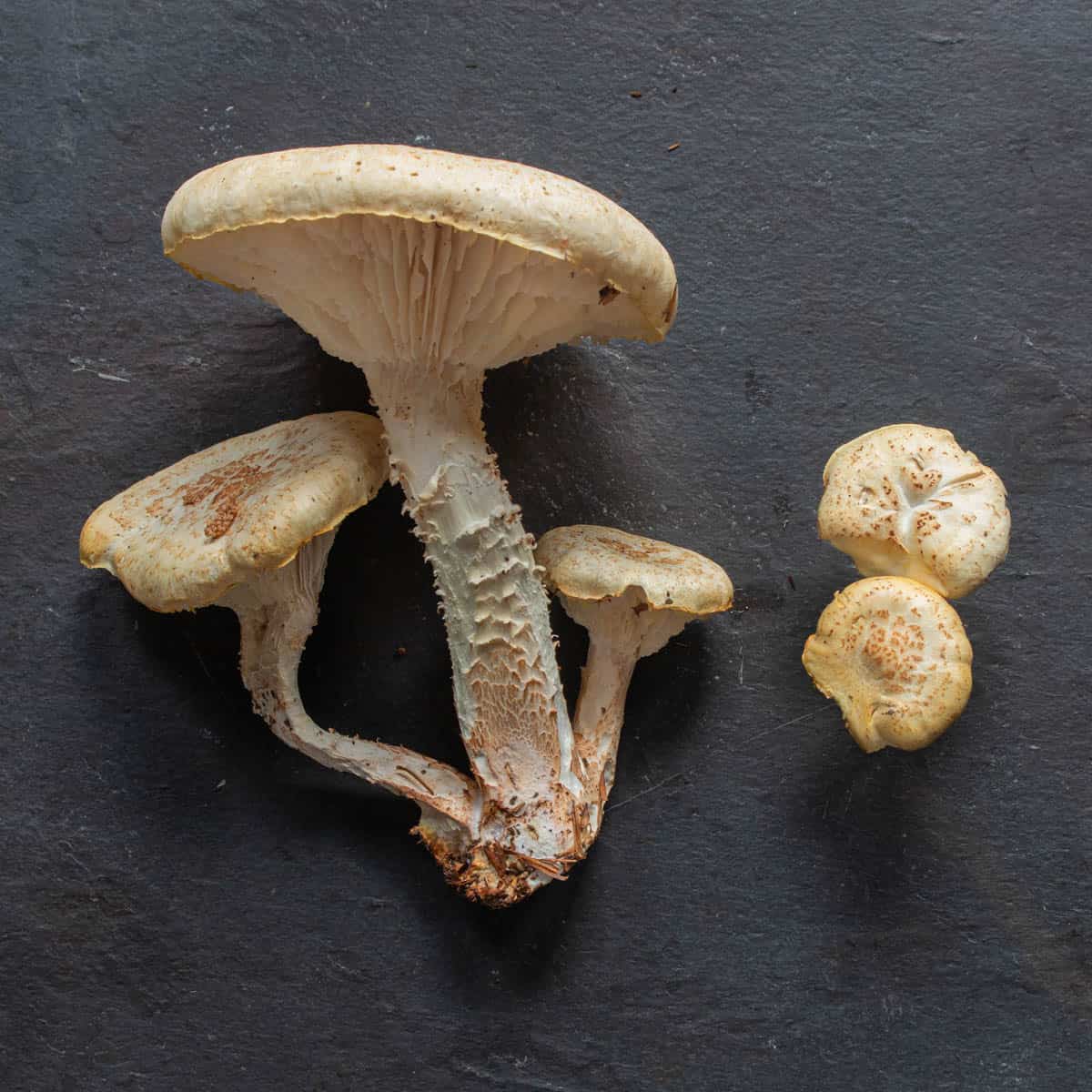
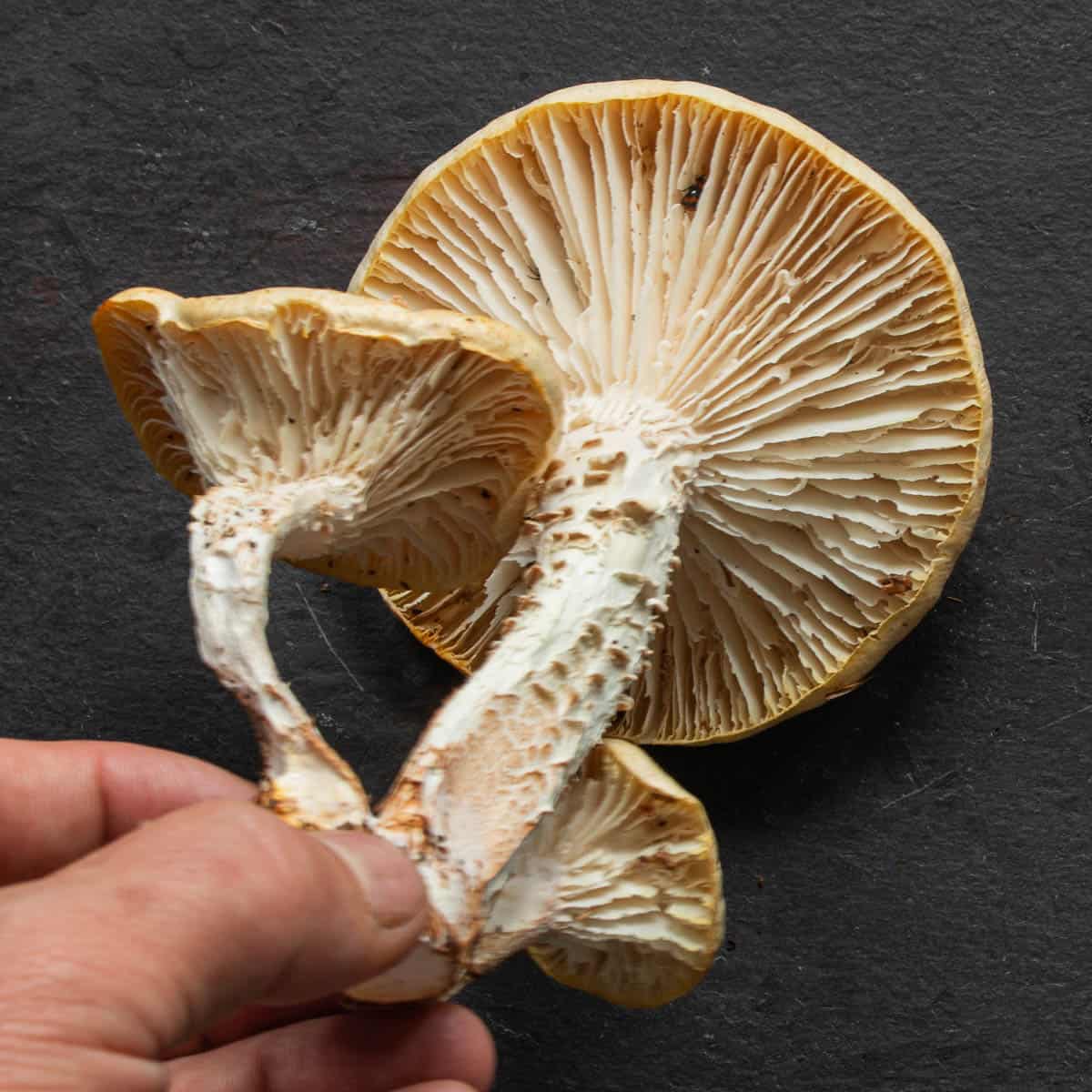
These often appear in small clusters.
Neolentinus lepideus Identification
The mushrooms are parasites and decomposers of coniferous trees (typically Pinus), causing a brown rot in the wood. In the Midwest they appear in May, continuing throughout the Summer.
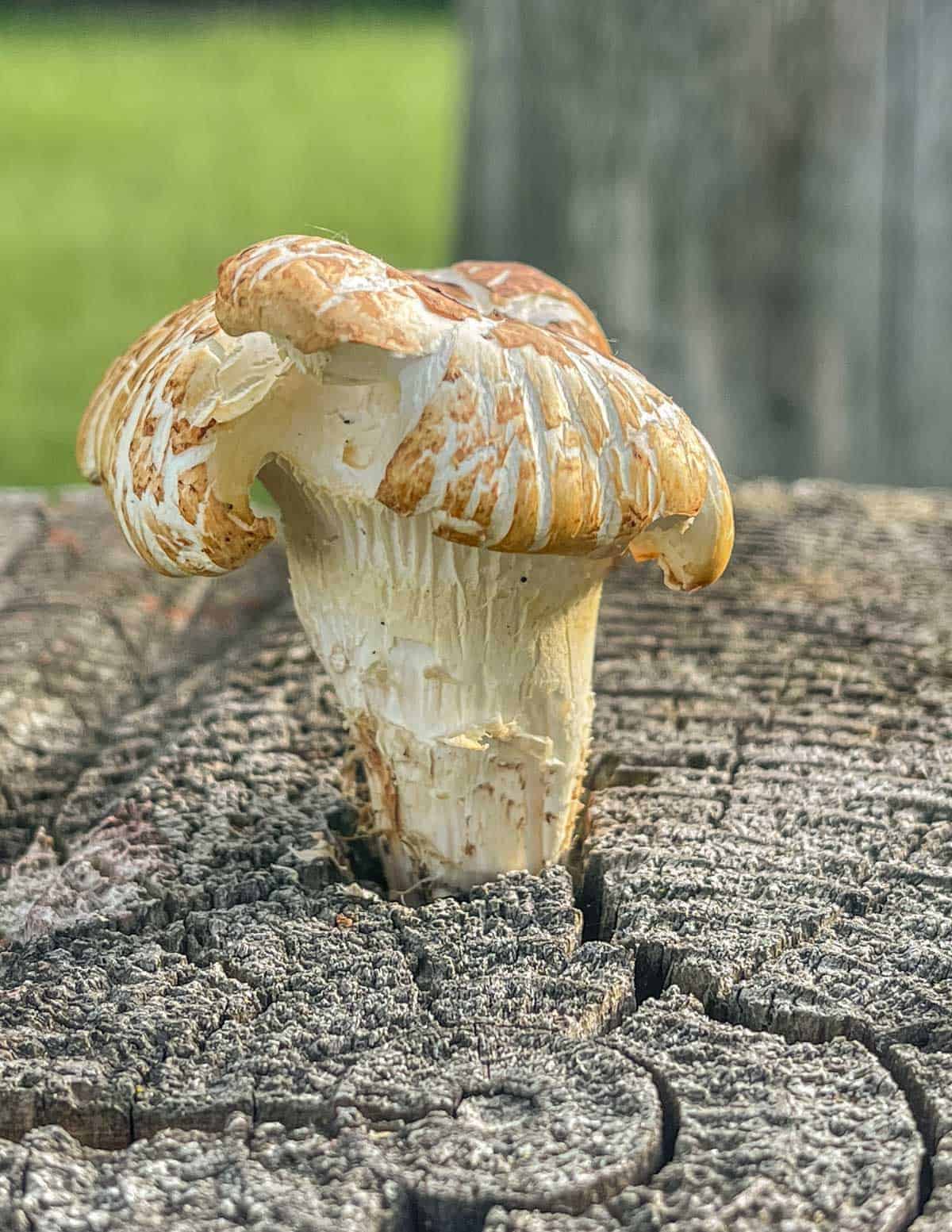
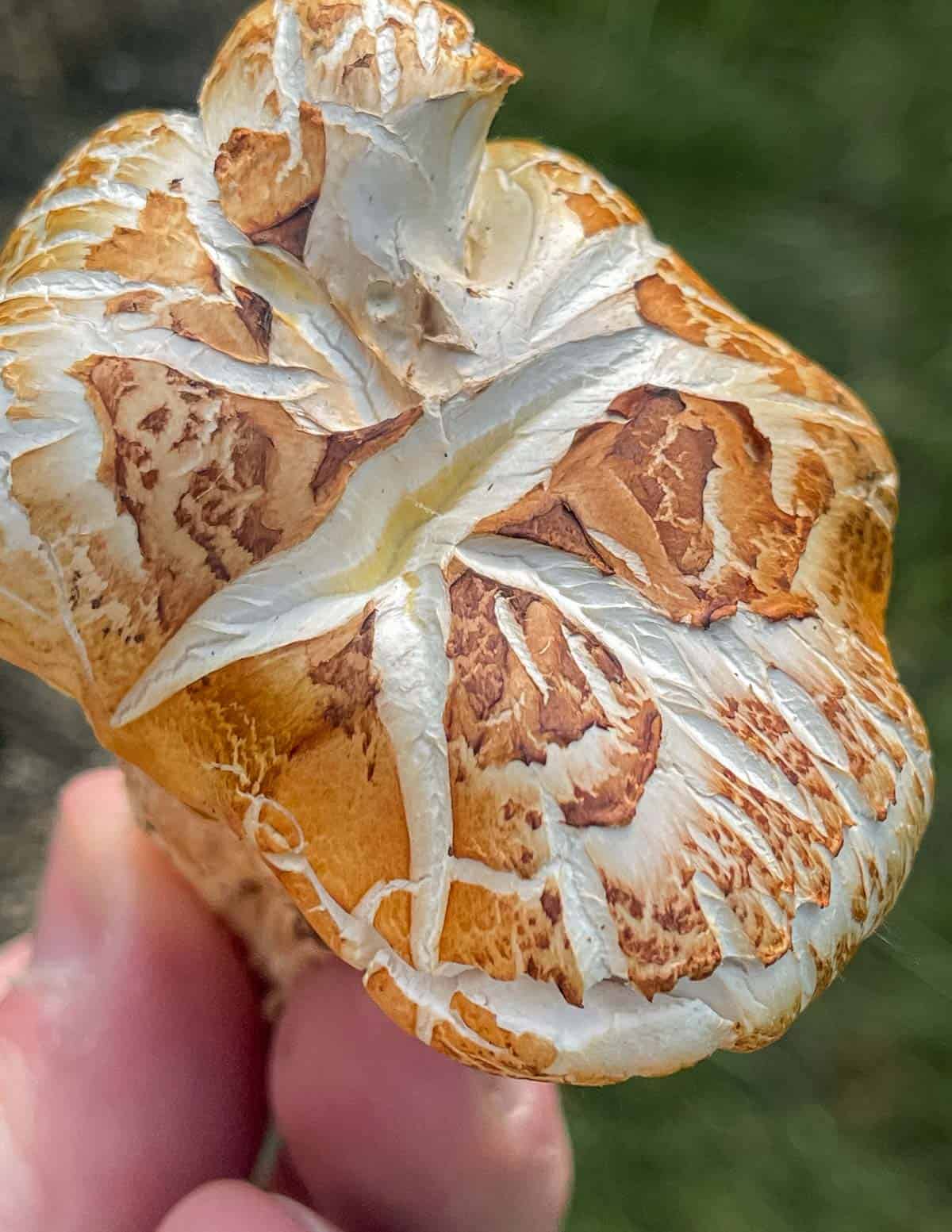
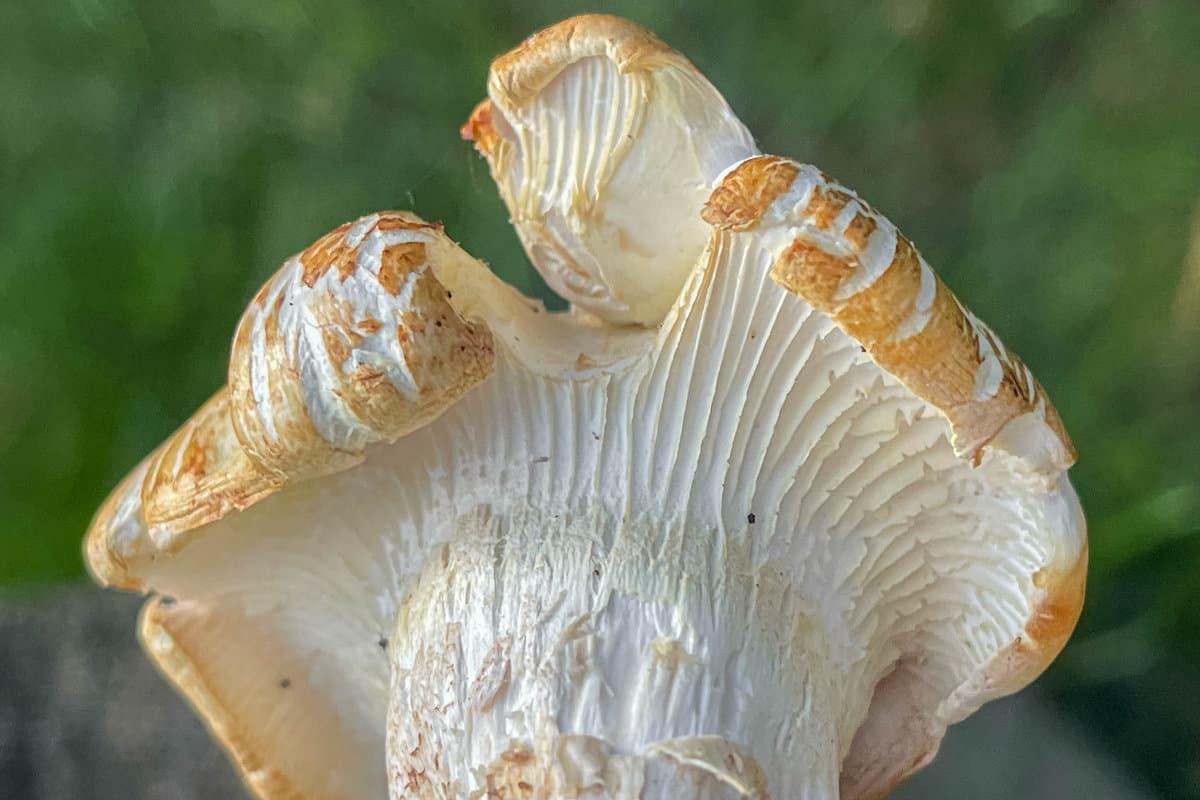
Left: Growing from a red pine (Pinus resinosum) stump. Middle: pronounced brown scales-note that the cap is very dry. Right: close up of young gills. Image credits: Jesse Roessler.
It's a relatively common mushroom in Europe and North America. I usually see small clusters of fruit bodies on partially buried red pine logs and stumps.
- The name lepideus means scaly, referring to the coarse, brown scales
- on the dry, whitish cap.
- Caps are usually 3-12 cm wide, stems around 1-2 cm thick and 2.5-15 cm long. The serrated edges of the gills are another good ID feature
- White spore print.
- Other common names for the mushroom are scaly lentinus and scaly sawgill.
- There's also brown scales on the stem, which may be pronounced in some specimens. There may or may not be a stem ring.

The gill edges are serrate (serrated).
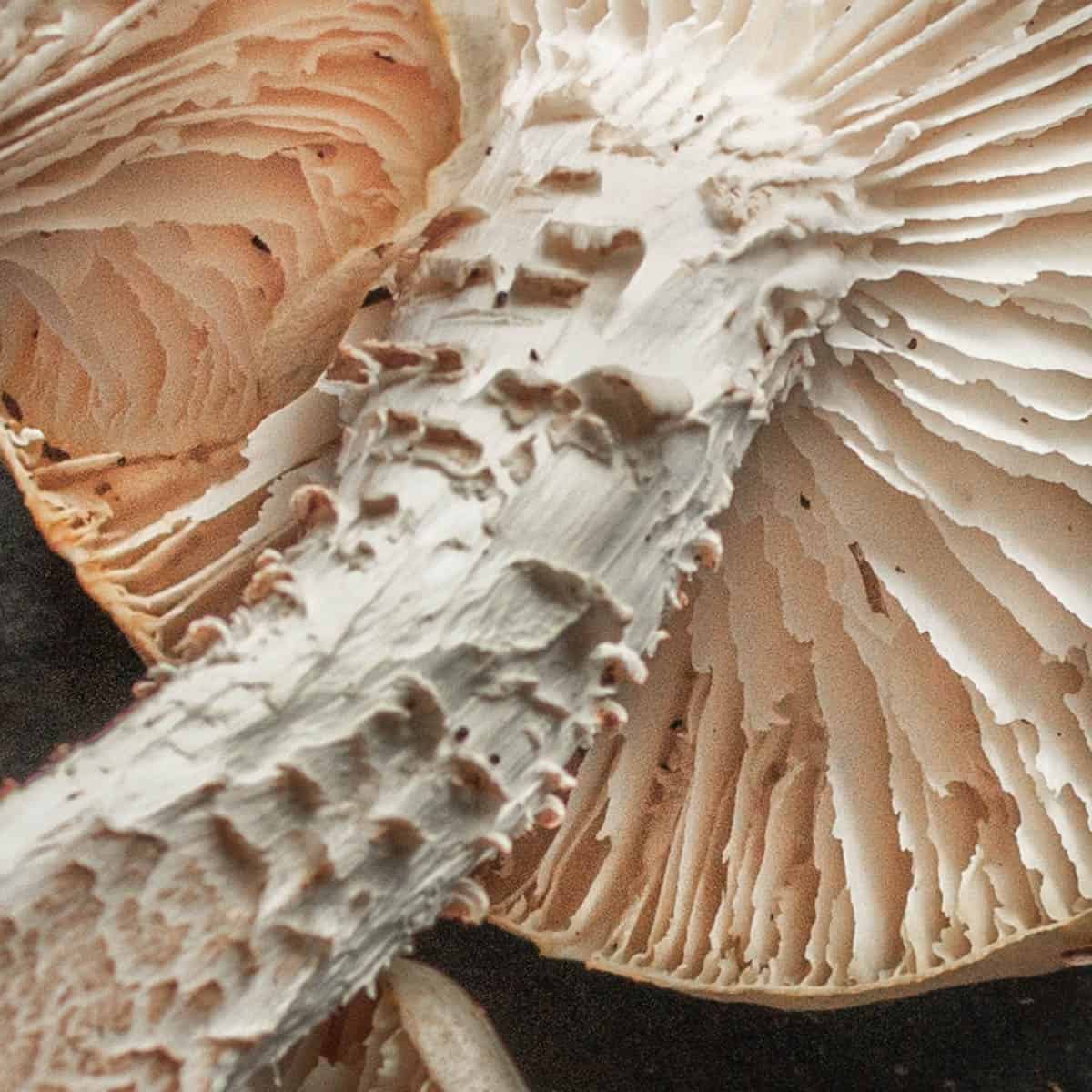
The stem is very tough and may have pronounced scales. Also notice the gills' irregular attachment to the stem.
Neolentinus lepideus Look Alikes
With it's scaly cap, the mushroom can be confused with many other mushrooms. In Western North America, there's Neolentinus ponderosus. Three common edible look alikes I often see mentioned are:
- Pluerotus dryinus
- Dryad Saddle or Pheasant Back Mushrooms (Cerioporus squamosus)
- Scaly Hedgehog (Sarcodon imbricatus)
While the brown scales on the caps can resemble other species, a look under the cap will help you identify them. Train wreckers have gills, pheasant backs have pores, and scaly hedgehog mushrooms have teeth.
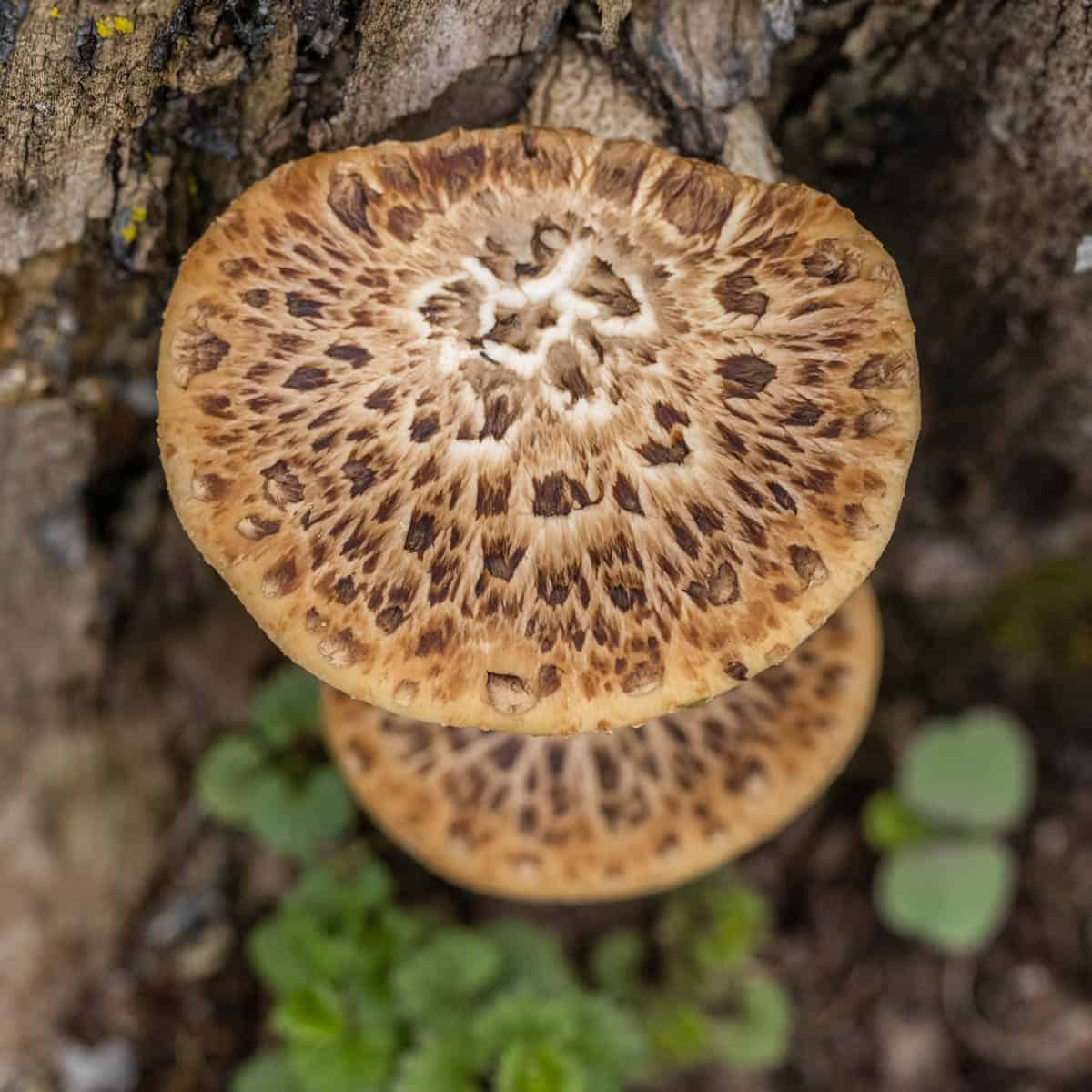
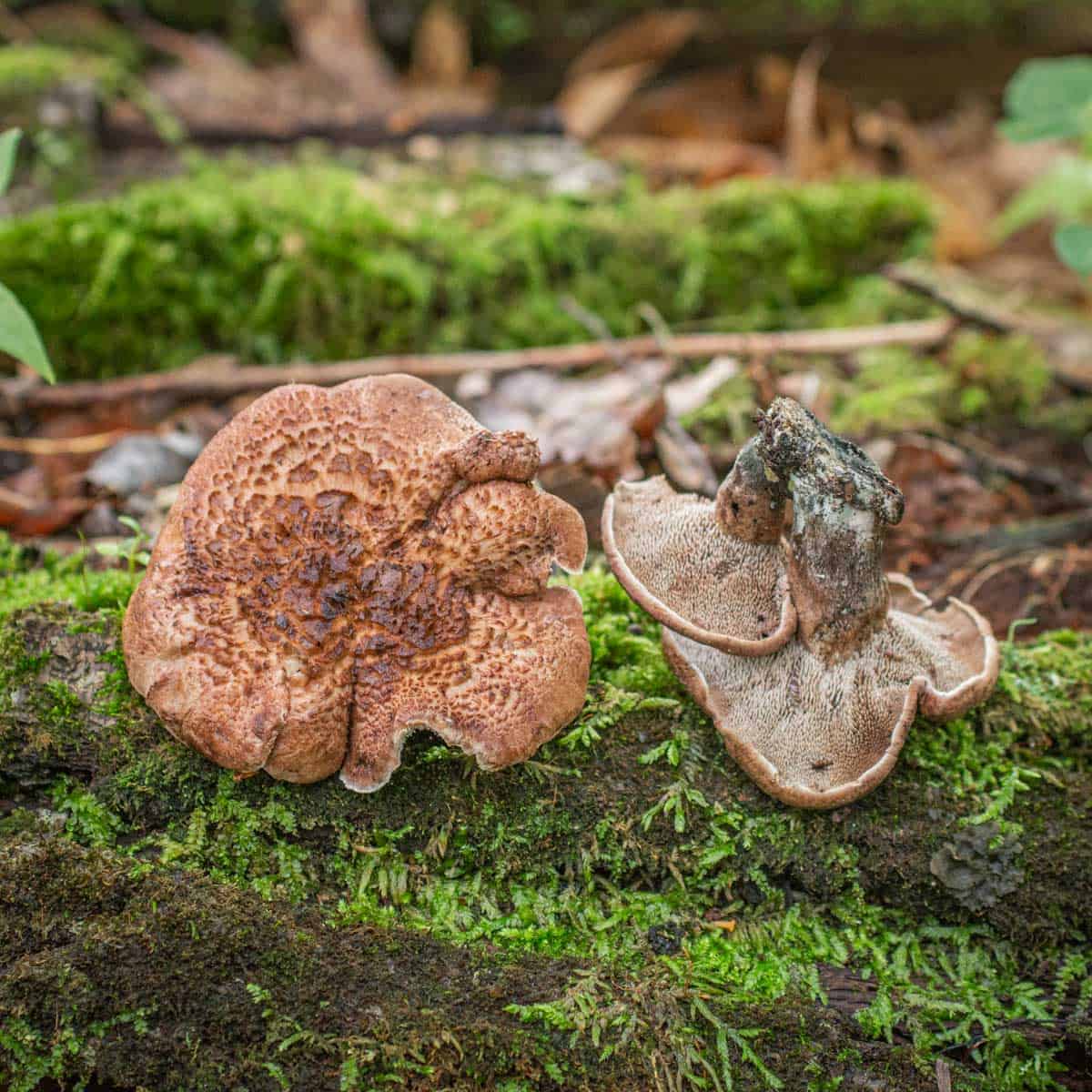
Cooking
Just because train wreckers are edible doesn't mean they're good. They have a leathery texture and a mild flavor and taste like oyster mushrooms, but the stem is tough and inedible. Some people report a spicy taste or an anise smell.
I rarely see these, and I don't pick them for the table. Also, never harvest any mushrooms growing from railroad ties or treated woods as they may have been in contact with hazardous chemicals.
References
David Arora: Mushrooms Demystified

falk burger
Taxonomists are The bane of actual scientists. This is the computer age for chrissakes! Keep the old names and put an asterisk on there with a link to the latest science. All my old mushroom books Are useless because they don’t list the new names. Robert Stabler, Chair of biology at Colorado College, Had a visceral contempt for taxonomists because a friend of his studied a tree frog for 20 years And had to put out an entirely new edition Because they changed the name
Alan Bergo
It’s been hard to keep up the rapid, wide-ranging changes. Amanita Chrysloblema threw me for a loop.
simona
but... no recipe <\3 so, don't use the stem
Ric
Hi Alan,
Just FYI...the plural of genus is genera (not genuses).
Love your posts!
Alan Bergo
Thanks Ric
Chris
So I guess you're not going to provide any recipes to use them by? lol jk
I think your no eat approach is good by me & I reckon for me. Probably would "wreck" a meal using them.
But, I am quite curious after reading article that I just have to go do a Google search for recipes.
Alan Bergo
Hey Chris. One of the most important pieces of advice I give people is that not every mushroom or plant will, or needs to change your life. The ho-hum ones make the good ones even better.
Chris
Yes, I receive that. I might be elated to see this mushroom & do a selfie with it standing on the railroad tracks (got some going through our village up here). I looked up recipes on Google & results favored "casseroles". I guess someone could have a theme meal with those included: (1) Starter: Shipwreck Soup. (2) Palate cleanser: Mushroom's Word Salad *but got to use cheap knives like chopsticks. (3) Main coarse: Train Wreck al a Casserole. (4) Dessert: Kitty Litter Cake {Yeah, was at a gathering that had it with gummy worms, choc. pudding, etc.}
P.S. (Even if I never meet this mushroom I can say that it definitely has made an impression on me that'll humor me whenever I think of it in it's rightful place somewhere out there in this bountiful kingdom of fungi!) 🙂
P.S.S. (Last, but never least: Thank you for sharing your knowledge of foraging. I have gained major strides in learning all this you have provided. I'd like to similar an idea from TMNT where I am like Raphael & you Master Splinter advising me with this: "The first rule of the Forager is to do no harm".)